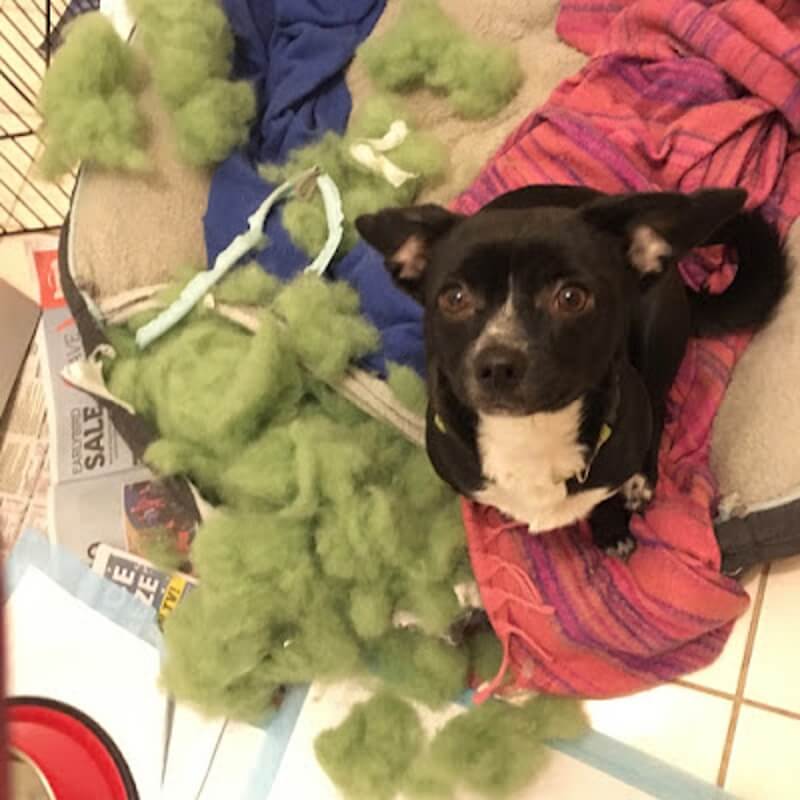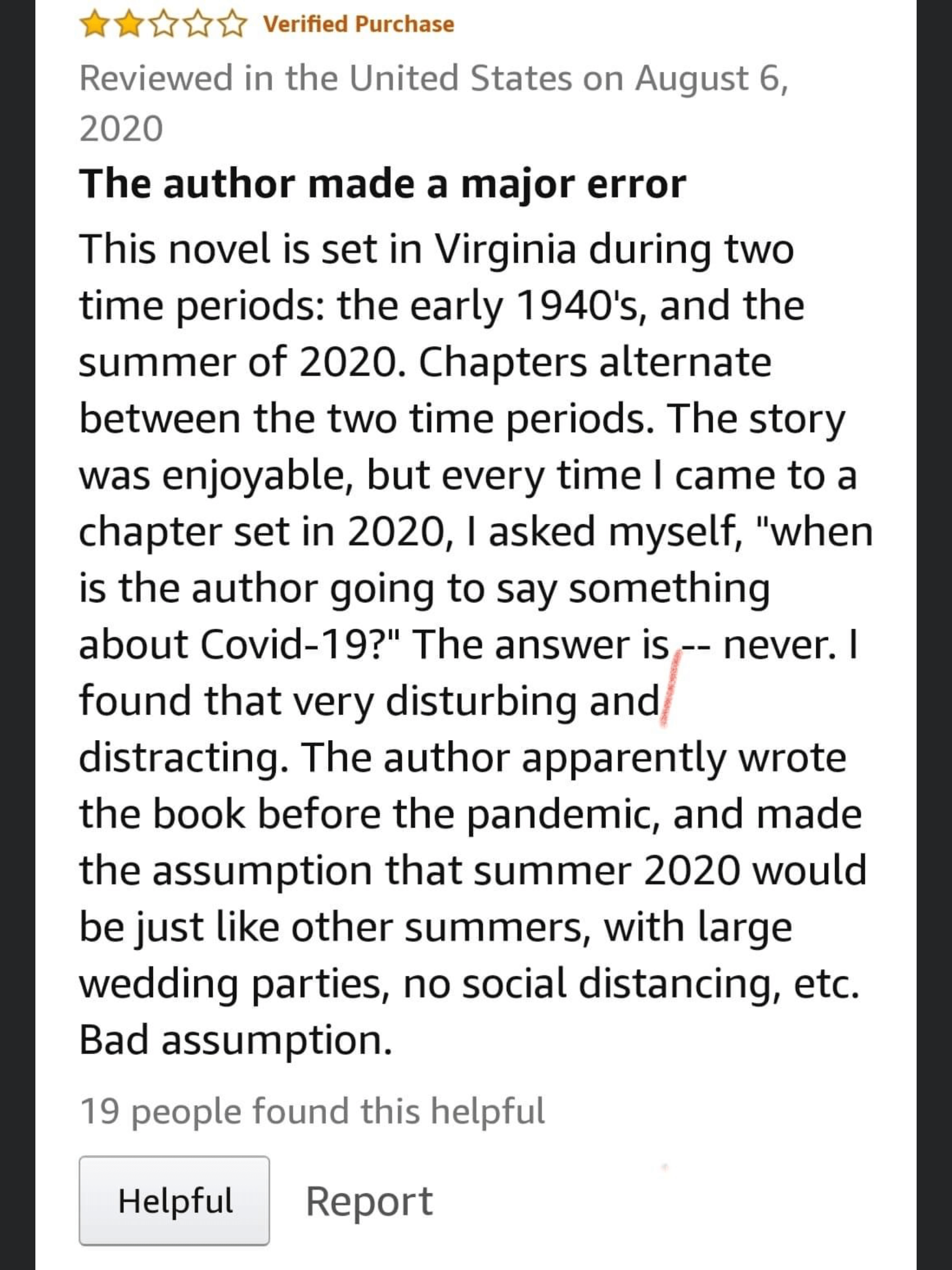
Should Authors Design Their Own Book Covers?
Should authors design their own book covers? I did. Here’s what the experience taught me …
You probably have heard the age-old saying you can’t judge a book by its cover, but that’s bad advice for an author. People judge books by their cover all the time.
The first thing that attracts a reader to a book, be it on the shelf of a bookstore or in an online catalogue, is the cover.
If a book has a cover that’s both attractive and reflects top selling books in its genre, then an eager reader will grab it and read the blurb. If the blurb hooks them and the book is the right price, they will (hopefully) buy it, read it, then tell all their friends about it.
Yay!
Alas if the cover is badly designed, looks amateur, or doesnt fit the genre, the potential reader will walk away.
Covers are important. Most of the author-focused online groups I’m part of strongly advise authors against creating their own covers. One response I read said only trained graphic designers should ever even attempt to this. Only they had the knowledge and experience to create the kind of cover that would sell a book
Did I head this advice? Nope.
Why didn’t I? There are several reasons.
Because I’m Scottish and stubborn (ha ha!)
One of the most endearing traits of the Scots is their stubbornness. Just ask my husband. How else could my ancestors cope with freezing weather, howling winds and summer that only lasts one day a year? Don’t get me wrong, I love my homeland. Its stark beauty is breathtaking and the people are generous and welcoming. But most Scots I know have this stubborn streak–which I share.
If you want to design your own book cover, you don’t need to be Scottish, but you do need to be stubborn. You need to decide to do this and do it well and not settle for a bad design.
I love being arty
I love immersing myself in art projects–especially ones focused on animals. I can spend hours tweaking the work. It’s the same with book cover design. I can get lost in the process. I don’t think I’d have attempted to create my own cover if I didn’t love visual art, and if I didn’t have a general idea of what looks right. My biggest problem in cover design was developing the skills needed to make the picture in my brain look right on the page. I had no idea about typography, nor did I understand how to use Photoshop.
I gave myself time to experiment
If you want to learn cover design you have to experiment to find out what works/ doesn’t work. Here is one of my early attempts at cover design for Running Scared. I was still thinking of writing as Sue Jeffrey then.
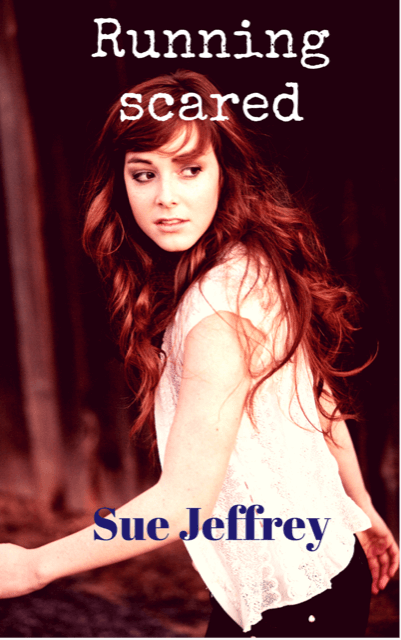
When I shared this with friends there was this uneasy silence… Which was gracious of them because the cover was pretty bad.
It was basically just a stock photo with a filter slapped onto the image with a bit of text. The title font wasn’t too bad, just too small and not in the right place, but the author font was awful :). It didn’t suit an author name and the font colour didn’t appear anywhere in the image.
This happens a lot in writerdom. The novice book designer tries to use an unsuitable font in a colour that clashes with the image. Contrast is fine, but if you want to design your own book cover, please use a font colour that complements the image. Ideally use a colour that’s already somewhere in the image, that way the font will feel one with the image, and not fight against it.
But remember it’s completely okay if your early attempts at cover design aren’t great. Just as with writing, you have to start somewhere. Make a hundred covers if you need to until you find something that gels.
I was willing to learn from others
I must admit that this project sat dormant for a long while between cover attempts. Every now and then I’d bring it out as an ‘art project’ and try some things.
A big shout out to Ben Morton of Immortalise Designs. Ben is a friend and writing group buddy who showed great patience when I’d suddenly throw a random design at his messenger inbox.
Here are some of the other concepts I tried. Note I experimented with different titles too.
(Warning, there are images of spiders in the next two book covers.)
This one looked too young and… spidery. Arachnophobia is a key theme in the book, as Melinda fries to overcome her fear, but it’s not the sole focus.

The next one looked more like soft horror. There are scary bits in the story but it’s not horror.
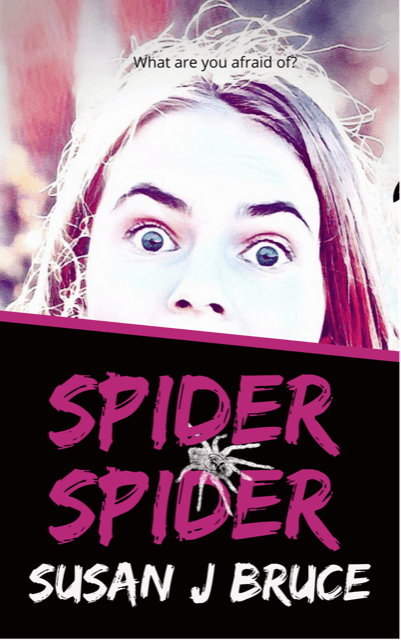
I didn’t mind this next one aesthetically, but the genre wasn’t clear. Maybe too romance-like?

Along the way I discovered that the cross-genre nature of my book (it’s a contemporary YA, coming of age AND romantic thriller ?) made cover design difficult. I needed to somehow incorporate an image that highlighted the story of my main character, Melinda, yet gave a taste of the danger she was in.
I pondered for a while, then one day I was browsing through stock photos and found an image that epitomised her. A girl with butterflies in her hair. You’ll have to read the book to discover why this fits so well. I combined this with other elements and eventually came up with this cover.
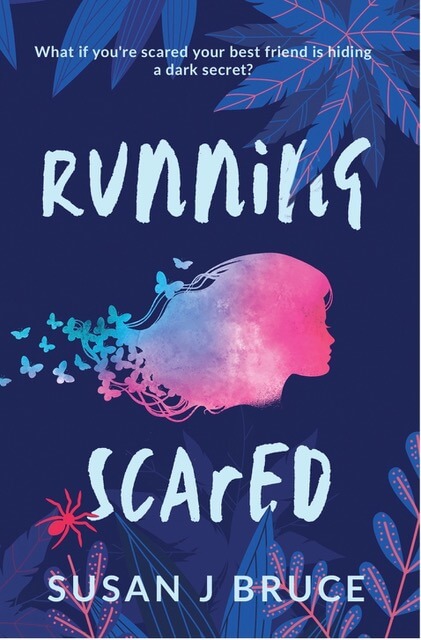
Then after some further advice (thank you Rowena Beresford and Cecily Paterson!) the final cover became a reality. I was happy, and those I shared the cover with loved it.
But would I have got there without listening to people who could help?
Nope.
I did a lot of research too. You’ll probably notice my typography improved as I went along. If you are going to learn cover design I’d strongly advise you to research the kinds of fonts used on book covers your genre. And check out the top 100 bestsellers on Amazon in your chosen genre. This will give you a good idea of the fonts and images used in books that are currently selling well. There’s a lot of information out there in internet-land—make use of it.
I needed to up-skill. I had virtually no photoshop knowledge—although I mainly used Canva initially. This was a process of trial and error but I highly recommend the SPF Cover Design course by Stuart Bache – a top UK cover designer. All the SPF courses are fabulous if you want to independently publish books. They are pricey but worth the dollars. Stuart’s Cover Design Course gave me some simple pointers that made all the difference.
How long did this process take?
This whole journey took a gazillion years—or it felt like it. I think I started the cover in 2016 and it’s now 2022. To be fair, I originally wanted to traditionally publish the book, and during this time I sent it out to various publishers. I had lots of nibbles, but no publisher committed.
Maybe it was because the book is a mixture of genres. I think the book just wasn’t ‘ready’ when I sent it to some, but the most frustrating responses went something like this:
I really enjoyed Running Scared, it’s commercial and you have a gift for writing suspense. I found it hard to put down. Unfortunately, it doesn’t fit our list.
Aargh!
So instead of rewriting Running Scared to a publisher’s satisfaction I rewrote it to mine. And created the cover too. That’s the joy of independent publishing.
A book—and its cover—can be a labour of love.
Should authors design their own book covers?
Having said all of this, what would I advise authors who are thinking of designing their own covers?
I’d say go ahead if all of these conditions apply:
- You are either Scottish or extremely stubborn and not willing to settle for a substandard cover ?
- You love being arty and learning new skills
- You have the time to do this and get it right
- You’re prepared to put in a lot of work
But if the above criteria don’t apply, then commission a custom cover or use one of the many pre-made covers available online. Some premade covers are amazing. I would have used a pre-made cover if I’d found one that fitted my book.
The big question: Would you be better off writing?
In one writing forum I follow, they have a saying: WIBBOW—Would I be better off writing?
The truth is, I probably would have been much better off typing words rather than nuancing cover art. But for a while there I had more time available than money to pay a cover designer—and I really wanted to give this a go.
And now I have a new skill. I still have a humungous amount to learn. I know some amazing graphic designers and I’ll never be in their league, but I’d like to get to the stage where I can design covers for other authors.
But that might take a wee while. Life is busy! The print version of Running Scared had a soft launch in February but the official launch is happening after Easter.
You are invited!
I’m joining with three other authors in a book launch party.
Where? When?
- Wednesday 20 April, 2022
- Immanuel Lutheran Church. 139 Archer Street, North Adelaide
- Doors open 6pm for a 6:30 start
If you can’t get there, you can still buy the book. The print version of Running Scared is live on Amazon and several other online retailers. The ebook is currently available on preorder—although I’m having some hiccups with Apple Books, but that should be resolved soon. So you can order your copy by clicking this button.
It’s an exciting time!
Running Scared has a strong disability theme. Catch Tilly, author of Otherwise Known as Pig, said Running Scared was, “The best portrayal of disAbility I’ve ever read.”
If you do read Running Scared I’d love to hear what you think.
But back to cover design. Have you ever tried to design your own book cover? How did it go? What lessons did you learn? Pease let me know in the comments below.
Pssst … BTW!
You can find out more about Running Scared on my website https://www.susanjbruce.com. Please sign up for my newsletter because you’ll get a free short story and all of my updates!
Pssst again … Even though some of the covers documented above are more than a wee bit crappy, they are still copyright Susan J Bruce.
Pssst for the third time … Don’t forget to sign up for my mailing list below and get a free short story!
*An earlier version of this article appeared on Christian Writers Downunder Blogspot on 11 April, 2022.








